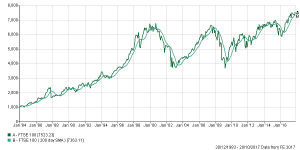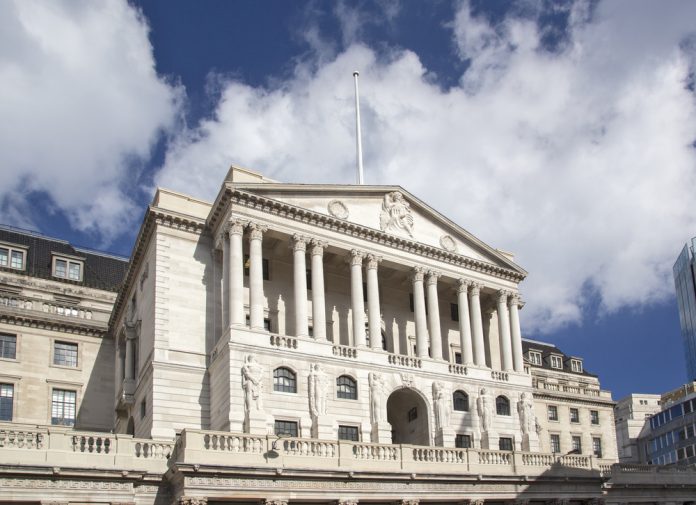The Bank of England (BoE) has recently indicated that there is a strong likelihood that the interest rate will be increased in the near future. This has led to many questioning how this will affect the FTSE.
This question is quickly becoming important to many as Mark Carney, governor of the BoE, said to expect interest rate increases “in the coming months”. This also comes as two of the nine BoE Monetary Policy Committee voted for an interest rate hike in the latest MPC meeting.
HSBC have also weighed in, expecting two rates rise by May 2018, taking rates to 0.75% pointing to a rise in inflation in the UK.
The BoE have not raised rates since 2007 and lowered them to 0.25% following the result of the Brexit referendum.
FTSE 100 impact
Since the FTSE 100’s inception in 1984 there have been a number of times when the BoE have increased interest rates after a period of prolonged lower rates. There have been six significant times this happened in the intervening period, with the severity of the increases varying to significant degrees. The consequences of these hikes have varied vastly.
Carney was recently questioned on whether a rate rise would signal the start of a tightening cycle, responding “I think you got to take one decision at a time, first point. Second, we are in a world of limited and gradual rate moves in any direction”. It should be assumed that this is the most likely path the BoE will take.
There are four previous periods that have seen the BoE take an incremental approach to interest rates, these beginning in 1994, 1996, 1999 and 2003.

In 2003, after the Dot Com bubble had burst and the market had hit its bottom, the BoE raised base interest rates from 3.5% to 3.75%. Over the next four years the BoE continued to raise rates by 0.25% every two to three months, leading to a 2.25% increase until the last hike in 2007. In this time the FTSE gained 64%. This was then followed by the global financial crisis and rates were slashed.
In contrast to 2003, the market was feeling the Dot Com bubble in full swing in 1999. Interest rates were hiked in this year from 5% to 5.25% and eventually up to 6% by February in 2000. The following period was fairly turbulent for the FTSE, starting at 6,400, with highs of 6,900 and lows of 5,900. The market’s general trend was to fall in the first five months and rally afterwards. At the end of the tightening period, the FTSE had fallen 2%.
Three years previous, in 1996, the market had also been performing well in the year previous and interest rates were raised from 5.7% to 5.9%.
What followed was a 1.8% increase in the next two years to 7.5%. The result was a strongly improving FTSE until the 1997 Asian financial crisis halted the gains causing a market rout. The market however rallied quickly to continue is trend of strong growth with FTSE 100 ending the period with 56% gains.
In early 1994 the UK began a 22 month period where they raised from 5.125% to 6.375% with an initial hike of 0.5%. In the immediate reaction, the FTSE 100 plummeted, then recovered until late 1994, when the market became erratic, finally making a strong recovery in early March 1995. The FTSE gained 6% over the period.
Prior tightening cycles imposed by the Treasury, at the time responsible for setting rates, occurred in 1984 and 1988. Both of these periods were however far more drastic hikes than would be expected to be announced by Carney at present.
In 1984 interest rates were raised 4.4% over a two month period. This saw steady growth in the FTSE for those two months, gaining 9%. The rate increases that began in 1988 also saw marked gains for the market. Over a 16 month period interest rates were raised 7.5%. Initially there were two periods of steady gains followed by losses, both returning the FTSE to the roughly the same level as when the hikes began. After this there was rapid gains for the FTSE until late 1989, by which time there was a 27% gain. These gains were part of the recovery after the Black Monday crash of 1987.
Conclusions are tough to draw from the previous periods of interest rate increases. What can be said is that rate hikes do not often result in a falling FTSE and terrific gains can be made in these times.
It is also pertinent to realise both that in a tightening cycle the market may be performing well, but not as well as it may have been previously and that different sectors of the market react in different ways to these interest rate changes.

